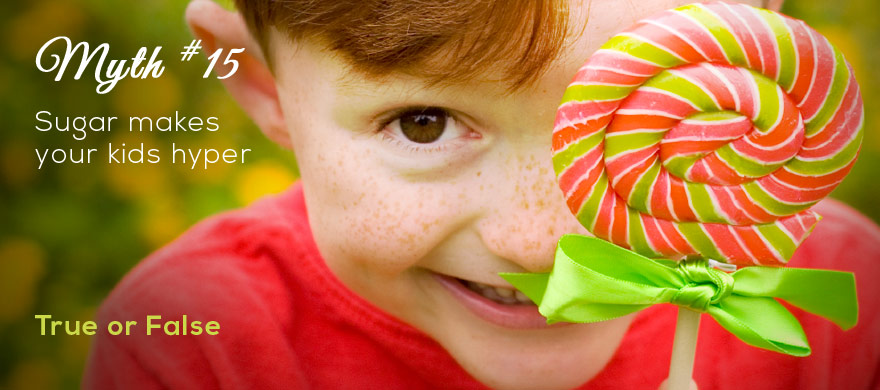
False.
If you are a parent and have ever had the honor of hosting a birthday party for your child, I can understand how you might think that sugar (e.g., cake, soda, candy, cookies) immediately enters the bloodstream and is magically converted to pure energy (jet fuel?) resulting in superhuman-like bursts of activity in your kids. The research studies on this topic, however, tell a different story. In an article published in the journal Critical Reviews in Food Science and Nutrition, Krummel, et al. (1996) state, “Twelve double-blind, placebo-controlled studies of sugar challenges failed to provide any evidence that sugar ingestion leads to untoward behavior in children with Attention-Deficit Hyperactivity Disorder or in normal children.” In other words, when children consume sugar, it does not result in increased activity levels. In fact, the results of some of the studies suggest that sugar might result in a calming effect for some children. Why then do so many people believe that sugar causes kids to be hyper? It is understandable how some would associate things like cake, cookies, candy, and ice cream at parties with increased activity levels in children. Anecdotally, this has been happening for many years with both parents and teachers. Might it just be that kids are more excited and active at a birthday party because they have ten of their best friends to play with? My wife and I have hosted our fair share of birthday parties (we have three boys) and I can honestly say that I’ve tried to pay attention to the activity level of the kids attending the parties before as well as after the cake and ice cream have been served, the result being no noticeable difference. We even engage in the questionable practice of letting our kids eat lots of candy right after they are done trick or treating. But when we put them to bed, they quickly fall asleep just like they do every other night.
Reference:
Krummel, D., Seligson, F., and Guthrie, H. Hyperactivity: Is candy causal? Critical Reviews in Food Science and Nutrition (1996), Vol 36, pp. 31-47.
